英语食物课件.ppt
- 格式:ppt
- 大小:1.24 MB
- 文档页数:3
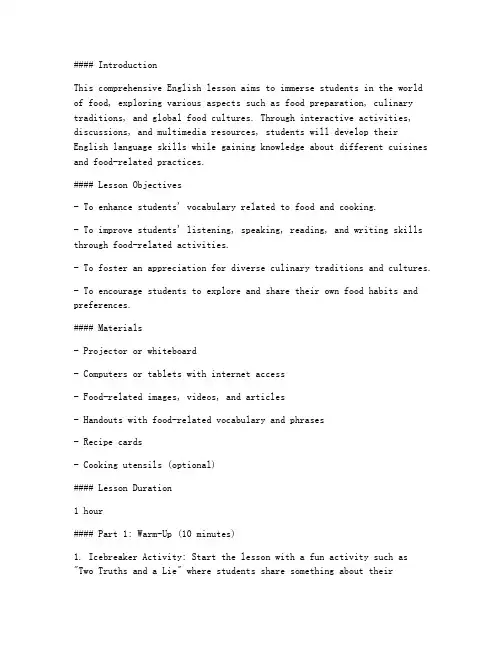
#### IntroductionThis comprehensive English lesson aims to immerse students in the world of food, exploring various aspects such as food preparation, culinary traditions, and global food cultures. Through interactive activities, discussions, and multimedia resources, students will develop their English language skills while gaining knowledge about different cuisines and food-related practices.#### Lesson Objectives- To enhance students' vocabulary related to food and cooking.- To improve students' listening, speaking, reading, and writing skills through food-related activities.- To foster an appreciation for diverse culinary traditions and cultures.- To encourage students to explore and share their own food habits and preferences.#### Materials- Projector or whiteboard- Computers or tablets with internet access- Food-related images, videos, and articles- Handouts with food-related vocabulary and phrases- Recipe cards- Cooking utensils (optional)#### Lesson Duration1 hour#### Part 1: Warm-Up (10 minutes)1. Icebreaker Activity: Start the lesson with a fun activity such as "Two Truths and a Lie" where students share something about theirfavorite food, two facts, and one lie. The class will guess which statement is the lie.2. Vocabulary Building: Introduce key food-related vocabulary using images or flashcards. Have students repeat the words and use them in simple sentences.#### Part 2: Food Preparation (15 minutes)1. Demonstration: Show a short video clip of a traditional dish being prepared. Encourage students to observe the steps and ingredients.2. Discussion: Discuss the video with the class, asking questions such as:- What ingredients are used?- What cooking techniques are demonstrated?- How does the dish look and taste?3. Group Activity: Divide the class into small groups and assign each group a simple recipe to prepare. Provide recipe cards and cooking utensils.- Students will work together to follow the recipe, practicing their reading and following instructions in English.- After preparing their dish, each group will present their creation to the class, describing the steps and the final product.#### Part 3: Culinary Traditions (20 minutes)1. PowerPoint Presentation: Use a PowerPoint presentation to introduce different food cultures around the world, focusing on key dishes and cooking methods.2. Interactive Map: Have students work in pairs or small groups to research a specific country's cuisine. They can create a poster or a short presentation sharing their findings.3. Class Discussion: After the presentations, discuss the similarities and differences between the cuisines, and how food reflects cultural identity.#### Part 4: Food and Health (15 minutes)1. Healthy Eating: Discuss the importance of a balanced diet and healthy eating habits. Introduce vocabulary related to nutrition and health.2. Activity: Students will read a short article about healthy eating and complete a comprehension worksheet.3. Group Activity: In groups, students will brainstorm and discuss ways to incorporate more healthy foods into their diets.#### Part 5: Culinary Challenges (20 minutes)1. Cooking Contest: Organize a cooking contest where students can showcase their culinary skills. Provide a simple recipe or let them create their own dish.2. Judging Criteria: Establish a set of criteria for judging, such as taste, presentation, and adherence to the recipe.3. Tasting Session: After the contest, have a tasting session where students can sample the dishes and vote for their favorite.#### Part 6: Conclusion and Reflection (10 minutes)1. Feedback: Collect feedback from students on what they enjoyed about the lesson and what they found challenging.2. Reflection: Have students write a short reflection on what they learned about food and food cultures during the lesson.#### Assessment- Participation in class activities and discussions- Completion of the cooking contest- Handouts and worksheets- Reflection essays#### Extension Activities- Students can create a food diary, documenting their meals and healthy eating habits.- Organize a food festival where students can bring in traditional dishes from their families or countries.- Invite a guest speaker, such as a chef or a nutritionist, to discuss food-related topics.By the end of this lesson, students will have gained a deeper understanding of food practices and cultures, while also improving their English language skills.。



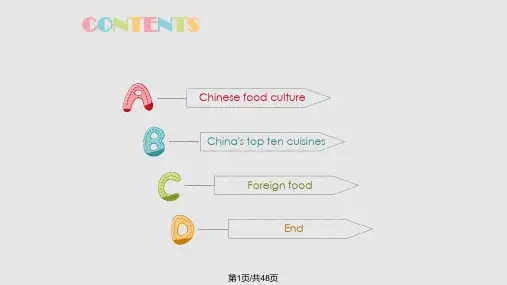
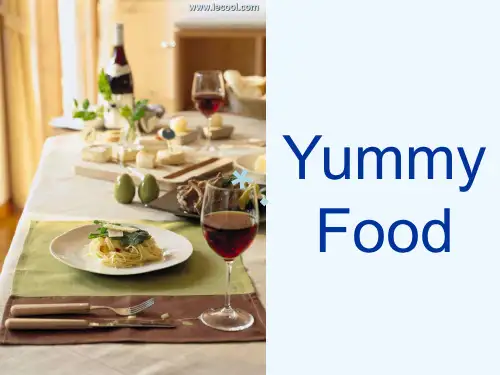
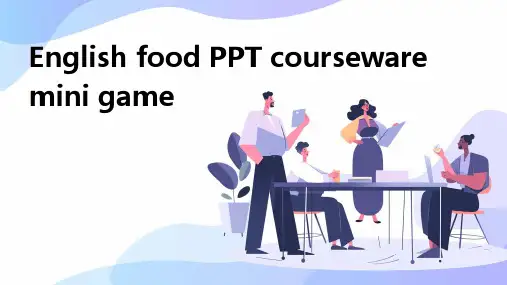
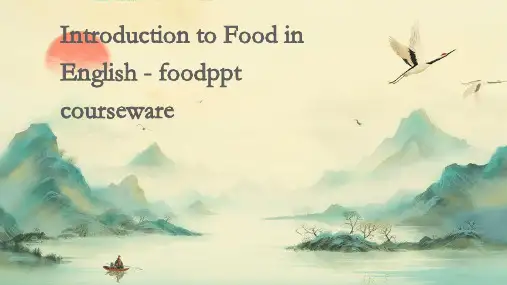
![英语《My Favourite Food》My Favourites [2]PPT公开课件](https://uimg.taocdn.com/e068edca5f0e7cd185253653.webp)
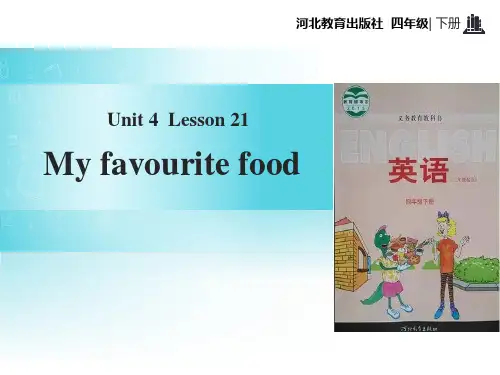
![Food食物英语课件[优质ppt]](https://uimg.taocdn.com/55852c18dd36a32d73758171.webp)